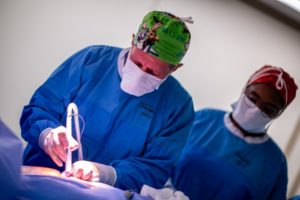
The use of a subcutaneous-implantable defibrillator (S-ICD, Boston Scientific) reduced the rate of major, lead-related complications by as much as 92% when compared to a transvenous device (TV-ICD), according to the investigators of the ATLAS trial, who presented their findings during a late-breaking trial session at the Heart Rhythm Society’s 2022 annual meeting (HRS 2022, 29 April–1 May, San Francisco, USA).
According to the study’s principal investigator Jeff Healey (McMaster University, Hamilton, Canada), the results indicate that the S-ICD can be considered as an alternative to the TV-ICD, particularly in patients at increased risk for lead-related complications.
ICDs prolong survival in patients at high risk of ventricular tachycardia (VT) or ventricular fibrillation (VF), though Healey noted that device-related complications can occur in up to 3% of recipients—some of which are fatal—and mostly related to the intra-cardiac lead.
The S-ICD was developed to prevent lead-related complications, Healey added, though their superiority has not clearly been proven in a randomised controlled trial. The PRAETORIAN trial demonstrated the non-inferiority of S-ICDs versus TV-ICDs for a composite outcome of inappropriate shocks and complications, Healey explained, adding that additional randomised trials are needed to clarify S-ICD performance compared to TV-ICDs in relation to appropriate shock efficacy and inappropriate shocks.
The primary objective of the ATLAS trial was to show that the use of S-ICD reduces the rate of major lead-related complications, measured at six months following the implant of the device. Secondary outcomes of the trial included showing that the S-ICD had a similar risk of inappropriate shocks, to show that the S-ICD had a similar risk of failed inappropriate ICD shock or arrhythmic death, and to show that the S-ICD reduces all-cause ICD or lead-related reoperation.
In his HRS presentation, Healey documented that a total of patients were randomised, 251 to receive an S-ICD and 252 to receive a TV-ICD. A total of 246 patients completed follow-up in the S-ICD arm and 243 I the TV-ICD arm.
Healey revealed that major lead-related complications occurred in one (0.4%) patient in the S-ICD arm, compared to 12 (4.8%) in the TV-ICD arm (odds ratio [OR] 0.08; 95% confidence interval [CI], 0.0–0.55; p=0.003). No significant differences were observed in the rate of inappropriate shocks or the rate of failed appropriate clinical shocks, Healey added.
Further follow-up of ATLAS patients is ongoing, in order to increase the statistical power to assess the comparative rates of inappropriate shocks and failed appropriate shocks, as well as the impact of ICD type on tricuspid insufficiency and heart failure.












